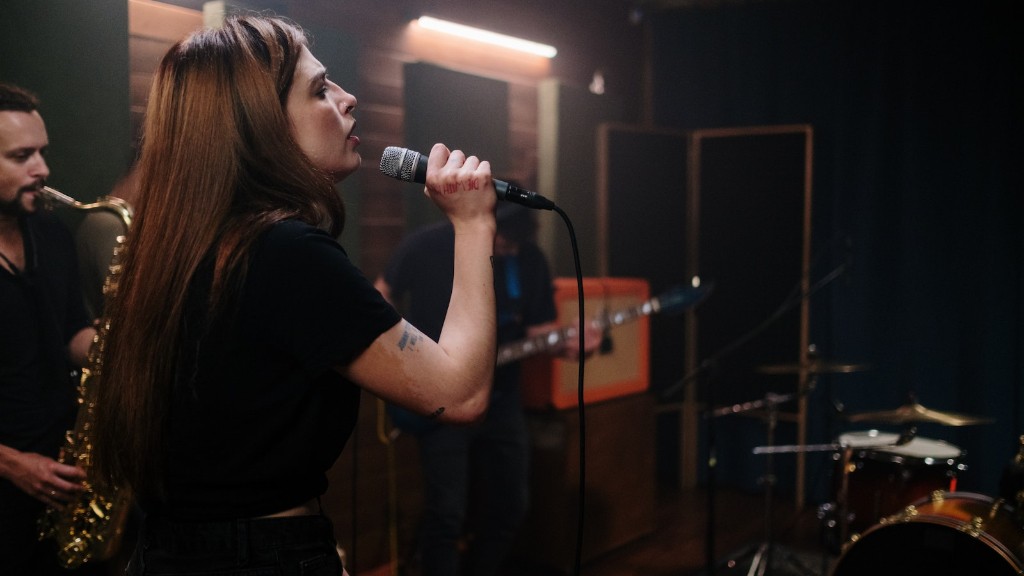How to Draw a Frog Step by Step
Many a budding artist has sat in front of a canvas with a dreamy gaze, looking out into the unknown and wanting to capture the beauty of a frog on that canvas. But doing this requires an understanding of the steps needed to draw a realistic-looking frog. If you’re looking to unleash your creativity and recreate the beauty of a frog in your work, here is a comprehensive guide to teach you the basics of how to draw a frog step by step.
The first step is to take a look at the anatomy of a frog. The body, the eyes, the hands, the mouth, the legs – these are all important parts of the anatomy that you need to keep in mind. Draw an oval for the main body, two circles for the eyes and two smaller circles for the pupils, four rectangles for the legs, and an inverted ‘V’ for the mouth. Don’t forget to add a curved line above the mouth to indicate the nostrils.
Next, draw thin lines connecting each of the elements you have drawn in the previous step, making sure to keep them symmetrical. This should give your frog a basic outline. Once you have the basic outline down, start adding details to your drawing. Draw thin lines to delineate the toes on the feet, add curved lines to indicate the mouth, and a few lines to indicate the belly. Finally, draw a few circles and zigzag lines to indicate the patterns on the back of the frog.
Now it’s time to add some colour to your frog. You can make the basic background first. You can use a light grey pencil or watercolour to colour the frog’s body. For the eyes, use a black pencil or pen to create the outline and then colour them in with white. Then, choose a few different coloured pencils to make the patterns on the back. Use lighter shades of the chosen colour and layer the colours to create a 3-dimensional look.
Now that you have the basic elements of your frog drawing down, it’s time to make it look more realistic. Use a range of techniques to enrich your drawing. Add a background or fill in the details of the frog’s skin with subtle mottling. Once you’re done, you can use a white charcoal pencil or a white ink pen to create highlights for eyes and other areas. This will bring your frog to life and make it stand out.
Finally, it’s time for the finishing touches.finish your drawing by adding a few extra elements. You can add some vegetation in the background to give an authentic look, or add a few small insects to indicate the natural habitat of your frog. If your drawing looks a bit dull, use some dark shadows here and there to make it look more dynamic. If your frog is sitting on some kind of surface, you can colour it in with light shades of brown.
Now that you have all the elements in place, it’s time to take a step back, admire your artwork and give yourself a pat on the back. Drawing frogs may seem daunting, but you can create beautiful realistic-looking frogs with patience and practice. So don’t be afraid to pick up your pencils and get creative!
Outline the Frog Body and Legs
Start your drawing by outlining the frog’s body, beginning with the main oval that will be the body. You can break the oval down into two parts— one will be the torso and the other will be the head. From there, draw two rectangles for the legs, with curved lines jutting out from the torso for the arms and two circles for the eyes. Finally, draw a line for the mouth, connecting the eye circles and two pointed lines for the nostrils. Carefully draw thin lines connecting all these parts and you will have the overall outline of your frog.
Detailing the Frog
To add more detail to your drawing, use thin lines to delineate each toe on the feet. Draw curved lines for the nostrils and an ‘M’-shaped line for the mouth. Add a few curves to the abdomen, indicating the ribs and stomach muscles. To draw the pattern on the back of the frog, use thin brush strokes and jagged lines. Use a thin black pen or charcoal pencil to draw thin lines around the contours of the frog’s body and eyes. This will bring a sense of depth to your drawing and make it look more dynamic.
Creating Shadows
To give your frog drawing a more realistic look, you’ll need to add some shadows. Start by using a darker shade of grey or a darker shade of the coloured pencils you have chosen for the frog’s body. Use a thin brush and gently brush the dark colour in the crevices and along the contours. Then, use a white charcoal pencil or a white ink pen to draw highlights on the eyes and other areas. You can also use the white pencil or pen to draw the highlights in the frog’s patterns for a more realistic look. Finally, complete your drawing by outlining the edges of the outline line with a thin black pen or charcoal pencil.
Final Touches
Now that you have the basic elements and detailing in place, it’s time for the final touches. You can add some small vegetation in the background or add a few small insects to give the frog a sense of realism. You can also add a few dots of light blue to the eyes to give them a bit of sparkle. Finally, once your frog is completed, you can add a few more elements of your imagination to add an extra sparkle to the drawing.

